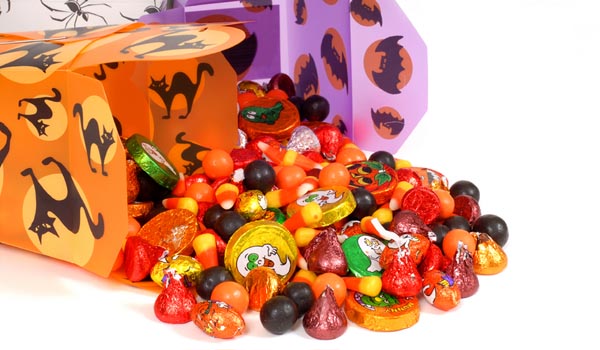5 Surprising Halloween Health Hazards

You're likely aware that Halloween fun can be risky. Time and time again, we hear the same safety tips: Don't accept candy that's unwrapped. Kids should be supervised while trick-or-treating. And those knives you use to carve pumpkins? They're sharp, so be careful.
But some dangers are less obvious. Here are five surprising hazards to keep an eye out for this Halloween.
"Heart attack" licorice: Consuming too much black licorice may cause abnormal heartbeats, or arrhythmias, particularly in order adults, according to the Food and Drug Administration. Black licorice contains the compound glycyrrhizin, which can cause the body's potassium levels to fall.
In some people, this can lead to, besides arrhythmias, edema (swelling), lethargy or congestive heart failure, the FDA says. Several studies have linked black licorice to health problems in people over 40. The agency has the following advice for licorice lovers: Don't eat lots of black licorice all at once; and if you've been binging on the stuff and you experience irregular heartbeats or muscle weakness, contact your doctor.
"Halloween diarrhea": Candy flavored with the sugar substitute sorbitol can cause diarrhea and other gastrointestinal problems. Sorbitol has fewer calories than sugar, and so it is often used in "dietetic" candies, according to the Center for Science in the Public Interest.
[Halloween Health: The Best and Worst Trick-or-Treat Candy]
When adults consume 10 to 50 grams of sorbitol, they may experience a range of gastrointestinal symptoms, from mild gas and bloating to cramps and serve diarrhea, the CSPI says. Children may be affected by smaller amounts.
Sign up for the Live Science daily newsletter now
Get the world’s most fascinating discoveries delivered straight to your inbox.
Flying eggs: Eggs thrown around Halloween time can cause severe eye injuries, according to a landmark study of the issue, published in the New England Journal of Medicine in 1988. The study documented five cases of eye injuries that resulted after patients were hit with an egg during the week of Halloween that year.
Injuries included blood in the front of the eye, scratches to the cornea and retinal swelling. Four of the five patients required hospitalization, and two were left with severe visual impairments, the researchers said. "Halloween should be added to the list of holidays posing a danger of eye injuries," they wrote.
Lead contamination in toys: Paint used to cover Halloween candy buckets and even fake teeth may be contaminated with lead, according to a 2008 study in the journal Science of the Total Environment. The study tested 95 seasonal or holiday products, many of which had a Halloween or Easter theme. Twelve of the products were found to contain levels of lead that were higher than U.S. regulatory limit of 0.06 percent by weight.
Among the tainted products were witch- and skull-shaped candy buckets, a Frankenstein drinking cup, and yes, fake teeth. The so-called "ugly teeth" were painted orange and contained levels of lead in excess of 6 percent, the researchers said. Because this product may end up in a child's mouth, the findings are cause for concern, they said. Lead is a neurotoxin.
Glow stick "poisoning": Calls to poison control centers reporting glow stick "poisoning" appear to increase during Halloween. A 2009 study of calls to a New Jersey poison control center found there were 139 calls related to glow stick products between 2002 and 2007, and the day with highest number of calls, 59, was Halloween 2007.
And a South Carolina poison control center also recently reported getting an especially high number calls regarding glow sticks around Halloween, according to WSPA 7, a local CBS affiliate.
Glow sticks are minimally toxic. Contact with the liquid, such as through digestion, can cause irritation or vomiting, Dr. Jill Michels, director of the Palmetto Poison Center in Columbia, S.C., told CBS. Kids who ingest glow stick liquid shouldn't need to visit the hospital, but their parents should call poison control, Michels said.
This story was provided by MyHealthNewsDaily, a sister site to LiveScience. Follow MyHealthNewsDaily staff writer Rachael Rettner on Twitter @RachaelRettner. Like us on Facebook.

Rachael is a Live Science contributor, and was a former channel editor and senior writer for Live Science between 2010 and 2022. She has a master's degree in journalism from New York University's Science, Health and Environmental Reporting Program. She also holds a B.S. in molecular biology and an M.S. in biology from the University of California, San Diego. Her work has appeared in Scienceline, The Washington Post and Scientific American.









